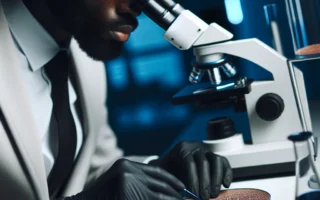Understanding the Cellular Mechanisms of Aging
The quest for advanced anti-aging methods has led scientists to delve deep into the cellular mechanisms of aging. Understanding these intricate processes at the cellular level is crucial for developing effective anti-aging interventions.
At the core of cellular aging is the gradual decline in the function and integrity of cells, primarily due to a combination of genetic, environmental, and lifestyle factors. One of the key players in this process is the phenomenon of telomere shortening. Telomeres, the protective caps at the ends of chromosomes, serve to maintain genomic stability. However, with each cell division, telomeres undergo shortening, eventually triggering cellular senescence or programmed cell death.
Another critical aspect is the role of mitochondria, often referred to as the powerhouses of the cell. Mitochondria play a central role in energy production and are also involved in signaling pathways related to aging. Accumulated damage to mitochondrial DNA and the decline in mitochondrial function contribute significantly to the aging process.
Furthermore, the intricate interplay of cellular signaling pathways, such as the mTOR pathway and sirtuin proteins, has emerged as a focal point in understanding the regulation of aging at the cellular level. These pathways are involved in the control of cellular metabolism, stress response, and the maintenance of genomic stability.
In addition to intrinsic cellular processes, the impact of extrinsic factors, such as oxidative stress and inflammation, on cellular aging cannot be overlooked. The cumulative damage caused by reactive oxygen species and chronic low-grade inflammation can accelerate cellular aging and contribute to age-related diseases.
In light of these cellular mechanisms, the development of advanced anti-aging strategies is aiming to target these fundamental processes. From telomerase activation to the modulation of mitochondrial function and the manipulation of cellular signaling pathways, a deeper understanding of the cellular mechanisms of aging is paving the way for innovative anti-aging interventions.
In conclusion, unraveling the complex web of cellular mechanisms involved in aging is crucial for advancing anti-aging research. By gaining insights into the underlying cellular processes, scientists are moving closer to unlocking the secrets of aging and developing advanced anti-aging methods that have the potential to redefine the limits of longevity and healthy aging.
Understanding the intricate cellular mechanisms of aging is crucial for developing advanced anti-aging interventions. From telomere shortening to mitochondrial dysfunction and cellular signaling pathways, these processes play a fundamental role in the aging process. By targeting these cellular mechanisms, scientists aim to develop innovative anti-aging strategies that have the potential to redefine the limits of longevity and healthy aging.
Cutting-Edge Technologies in Anti-Aging Research
As we continue to delve deeper into the realm of anti-aging research, cutting-edge technologies are playing an increasingly pivotal role in unlocking new frontiers. The pursuit of advanced anti-aging methods is no longer confined to traditional skincare routines or cosmetic procedures. Instead, scientists and researchers are harnessing the power of innovative technologies to push the boundaries of what is possible in the quest for prolonged youth and vitality.
One of the most groundbreaking technologies making waves in anti-aging research is gene editing using CRISPR-Cas9. This revolutionary tool allows scientists to modify genes with unprecedented precision, holding the potential to address genetic components that contribute to the aging process.
Furthermore, the field of regenerative medicine has witnessed remarkable advancements, particularly in the use of stem cells to rejuvenate aging tissues and organs. Stem cell therapies offer the tantalizing prospect of not just treating age-related ailments, but potentially reversing the biological clock at a cellular level.
In addition to these biological innovations, the convergence of technology and skincare has given rise to effective non-invasive treatments such as radiofrequency and ultrasound therapies. These modalities stimulate collagen production and tighten skin, providing a non-surgical approach to combating signs of aging.
The integration of artificial intelligence and machine learning has also accelerated the pace of anti-aging research. By analyzing vast datasets and identifying nuanced patterns, AI-driven platforms are aiding in the discovery of new anti-aging compounds and personalized treatment regimens.
As these cutting-edge technologies continue to evolve, the landscape of anti-aging research is being reshaped, offering unprecedented hope for those seeking to defy the constraints of time.
The Future of Age Reversal: Breakthroughs in Anti-Aging Science
Recent advancements in anti-aging science have sparked a new wave of excitement as researchers delve deeper into the mechanisms of aging. The future of age reversal looks promising as breakthroughs in anti-aging science shed light on innovative methods to combat the effects of aging at a cellular level.
One promising area of research involves the study of telomeres, the protective caps at the end of chromosomes that shorten as cells divide and age. Scientists are exploring ways to potentially halt or even reverse this process, thereby rejuvenating cells and slowing down the aging process.
Another cutting-edge approach is the exploration of senolytics, compounds that target and eliminate senescent cells which are associated with aging and age-related diseases. By clearing out these “zombie cells,” researchers aim to restore tissue function and promote healthier aging.
Furthermore, the emerging field of epigenetics offers insights into how gene expression can be influenced by lifestyle and environmental factors, providing opportunities to develop personalized anti-aging interventions tailored to an individual’s unique genetic makeup.
In addition, the role of mitochondria in aging has garnered significant attention, with potential interventions focused on enhancing mitochondrial function to revitalize aging cells and tissues.
With these cutting-edge breakthroughs, the future of age reversal is poised to redefine our understanding of aging and pave the way for advanced anti-aging methods that hold the promise of extending healthspan and improving the quality of life in later years.



